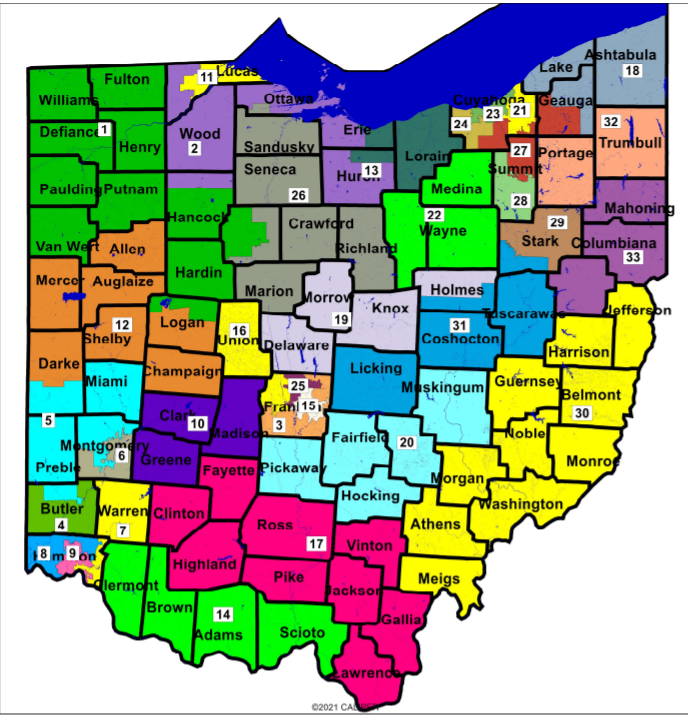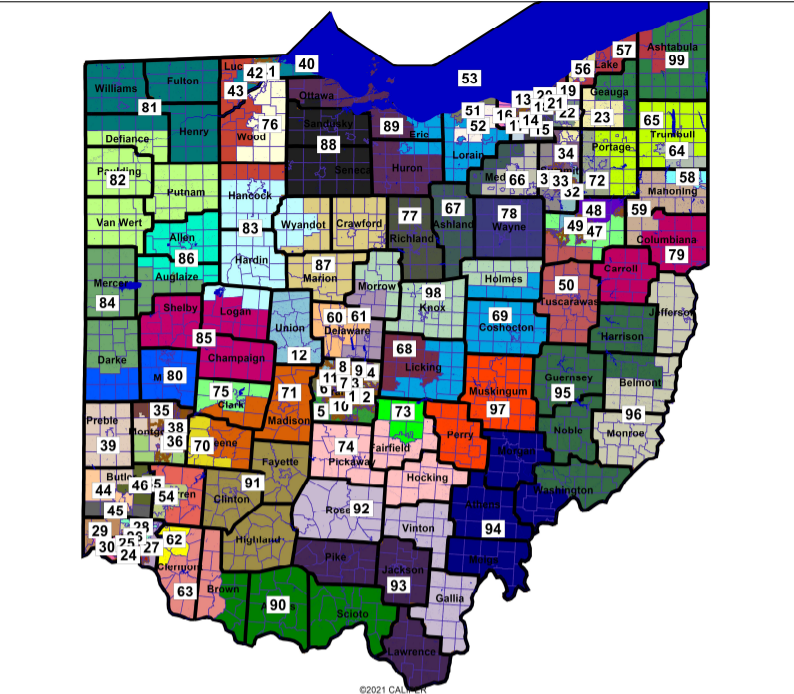Redistricting: Groups that sued over rejected maps say new versions still violate Constitution

It's déjà vu all over again as the fate of state House and Senate maps is once more in the hands of the Ohio Supreme Court and Chief Justice Maureen O'Connor.
The Ohio Supreme Court will decide whether new legislative maps approved by Republicans Saturday either satisfy or skirt the wishes of Ohio voters who overwhelmingly supported redistricting reform in 2015.
On Tuesday, advocates who sued over the first, now-rejected maps pointed out problems with the new versions, which could give the GOP a 57-42 advantage in the Ohio House and a 20-13 advantage in the Ohio Senate.
The second round of maps, which passed despite Democrats' objections, reduce the number of Republican-leaning seats in the Ohio House and Senate but don't match the statewide voting preferences of voters in the Buckeye State.
"The Commission’s refusal to follow this Court’s order and comply with the Ohio Constitution reflects a stubborn intransigence toward complying with (the Ohio Constitution), and a troubling willingness to flout those mandates whenever political expediency might dictate," attorneys wrote in objections to the new maps.
Plaintiffs asked the Ohio Supreme Court to declare the new maps unconstitutional, order the Ohio Redistricting Commission to draw a third round of maps and order, if necessary, a delayed deadline for candidates to file paperwork, which is currently Feb. 2.
“We object to the maps drawn by the Ohio Redistricting Commission along party lines because voters deserve better," said Jen Miller, executive director of the League of Women Voters, which is one of the plaintiffs. "These are partisan, gerrymandered maps that harm voters by favoring political interests.”
The Ohio Redistricting Commission approved the maps Saturday evening in a 5-2 party-line vote as the Cincinnati Bengals clinched a spot in the AFC championship. Because the maps did not receive bipartisan support, they could last only four years.


The new maps fall short of Ohioans' voting preferences, which amount to 54% for Republican candidates and 46% for Democratic ones over the past decade. Instead, the new plans crafted 57.5% House seats and 60.6% of Senate seats to lean Republican.
About a dozen of the Democratic-leaning seats are only barely so. Time will tell whether these efforts were enough to satisfy the Ohio Supreme Court's order rejected mapmakers' first attempt.
Republicans say their new maps are close enough to the statewide voting preference and don't violate other parts of the Ohio Constitution, such as compact districts and how Senate incumbents are treated.
“The map that we are presenting to you does comply with the court order," House Republican staff member Blake Springhetti told the commission Saturday. "I would say that given the time frame, we did the best we could."
Plaintiffs in the lawsuits proposed their own maps to the Ohio Redistricting Commission. Those plans gave Republicans a 57-42 or 56-43 advantage in the House, depending on election data used, and an 18-15 advantage in the Senate.
They also pointed out places where GOP mapmakers could have drawn Democratic districts and chose not to, such as Hamilton County's Senate seats. Instead of drawing two Democratic Senate districts in the Southwest Ohio county, the enacted plan packs Democratic voters into one, attorneys argued.
In addition to proportionality, the maps had other problems, attorneys contended. Stanford professor Jonathan Rodden analyzed the new maps and found multiple splits in two Franklin County House districts, which divided Columbus, Grove City and Jackson Township.
And the public was cut out of the mapmaking process.
"Not only were members of the public deprived of the opportunity to provide input on the substance of the plan, but they were also deprived of any chance to note the plan’s deficiencies under the Ohio Constitution," according to the objection filed.
The groups that sued over Ohio's maps include the League of Women Voters of Ohio, the Ohio chapter of the A. Philip Randolph Institute and several individuals; former Attorney General Eric Holder's National Redistricting Action Fund; and the Ohio Organizing Collaborative, Ohio chapter of the Council on American-Islamic Relations, Ohio Environmental Council and six Ohioans.
Attorneys argued that Ohio Supreme Court oversight is needed so the Commission "finally does its job, ceases the partisan game-playing, and draws a map that reflects what the Constitution requires rather than what the Commission thinks it can get away with."
Read the objection case here:
Jessie Balmert is a reporter for the USA TODAY Network Ohio Bureau, which serves the Akron Beacon Journal, Cincinnati Enquirer, Columbus Dispatch and 18 other affiliated news organizations across Ohio.
Get more political analysis by listening to the Ohio Politics Explained podcast
This article originally appeared on The Columbus Dispatch: Redistricting: New legislative maps still violate Ohio constitution

